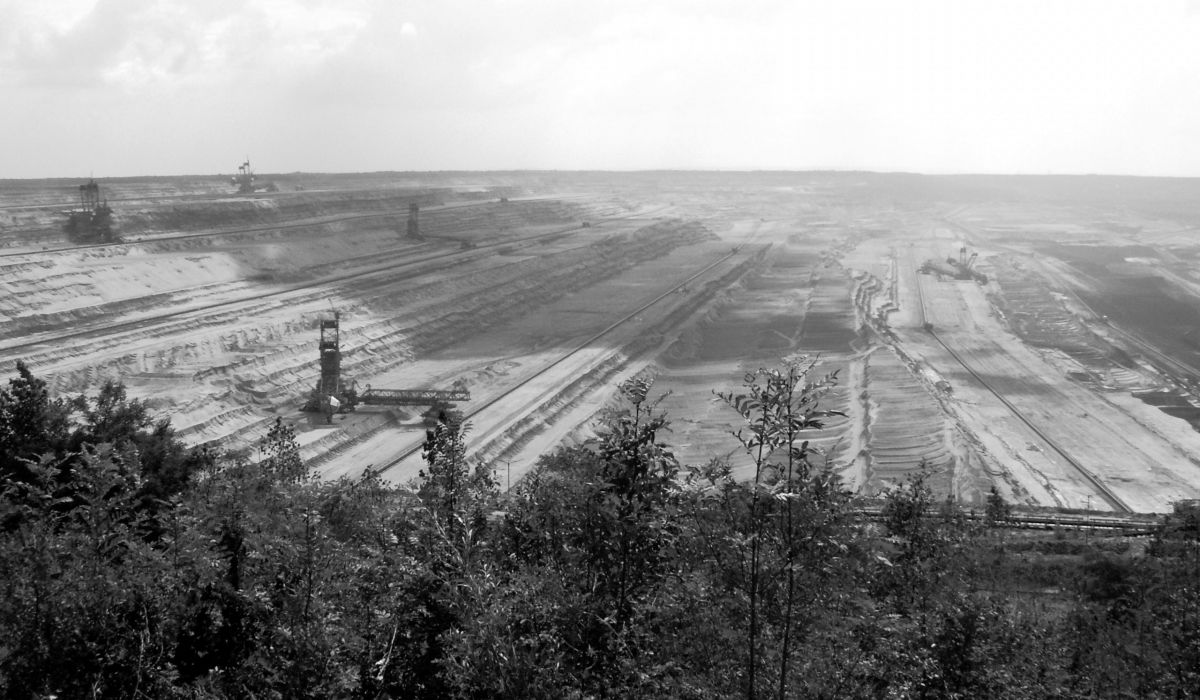Submitted by Dallas Kachan on

New breakthrough science and cost reductions from the world of cleantech hold promise for making mining—one of the dirtiest, most inefficient industries in the world—more profitable, safer and cleaner. But which cleantech innovations aimed at reducing toxicity in mining, as well as the need for power and water, are best positioned to succeed? Which companies will win and which will lose? How can existing players manage risk in the face of new innovation?
Big questions. We try to address them in a new research report on green mining technologies, just published this week.
As important as mining is to society, techniques and equipment that were first developed in the early 1900s are still standard in many modern mining facilities today. Mining is one of the last holdouts of dirty, inefficient industry that’s just waiting to be revolutionized by new breakthrough clean technology. Latest innovations and cost reductions in cleantech hold promise for making mining more profitable, safer and better for the planet.
While there are clear benefits to mining companies implementing new technologies, there is risk involved with new technology. New technology—like bioremediation of mine tailings (the often toxic output from mining processes) or electrochemical water treatment—has historically struggled to find footholds in mining because companies generally don’t like taking the risk of adopting new, unproven technology until others have. That attitude is now changing, as companies are increasingly motivated by dramatic new economic benefits promised by new green mining breakthroughs.
Propositions for green mining across the mine life cycle
The permitting process for opening new mines in most areas of the world is long and costly. Some companies are poised to reinvigorate the process with cleantech innovations aimed at making permitting faster and less expensive by reducing toxicity, power and water requirements. Mine closure costs, at the other end of the mine lifecycle, are being minimized by new remediation technologies. Other technologies promise other economic benefits.
In our research, we found important new innovation taking place in the following areas related to both hard rock (e.g. gold, silver) and soft rock (e.g. coal) mining:
- Power reduction
- Comminution efficiency (i.e. breaking large rocks into smaller ones)
- Low power separation (i.e. separating minerals/metals from ore)
- Hydrometallurgical processes (processes for separating minerals/metals from ore that don’t require large inputs of natural gas or electricity)
- Other alternative processes
- Fuel and maintenance reduction
- Equipment route optimization (i.e. software helping mining companies plan the most efficient routes for their mining vehicles)
- Fuel additives/filters
- Natural gas conversion
- Electric conversion
- Improved lubricants
- Polymers and coatings
- Training simulators (i.e. reducing fuel and maintenance expenses by training operators using immersive flight simulator-like equipment)
- Other fuel reduction approaches
- Toxicity reduction
- Bioleaching
- Bioremediation/phytoremediation
- Non-cyanide separation (i.e. not using cyanide, but biology to extract minerals/metals from ore)
- Emissions reduction
- Dust management
- Particulate sequestration
- Carbon sequestration
- Water reduction
- AMD/ARD remediation (i.e. addressing acid mine, or acid rock drainage, the acid created when large amounts of exposed iron-rich rock comes in contact with water... creating an orange slurry that kills vegitation and animal life)
- Water filtration/reuse
- Wastewater processing
- Tailings remediation
- Desalination
The state of mining innovation today – drivers for cleantech
Continuous advancements have allowed a growing number of cleantech technologies to surpass a tipping point. For the first time, many of these technologies are both environmentally sound and capable of competing against conventional methods in terms of operations, productivity and efficiency.
In our report, we found several drivers have propelled the mining industry’s growing use of clean technologies.
- Market volatility - The outlook for the future is uncertain as the mining landscape undergoes significant changes. Globalization, industrialization and industry consolidation are some of the contributing factors driving the changes. In addition, conflicting trends are indicating mixed signals about what lies ahead. Countries such as China are showing signs of slowing economic growth, yet forecasts of long-term global demand are bullish. Given the extensive planning required prior to commissioning, miners and investors are hesitant to move forward with projects without a confident outlook for the market. Companies are reacting to the changing industry dynamics by finding ways to bolster operations to become more flexible, cost effective and efficient.
- Rising operational costs and falling commodity prices - The growing cost of doing business is threatening margins and making it more expensive for companies to bring supply to the market. Records show production costs for commodities such as copper, aluminum and nickel have already reached or exceeded London Metal Exchange (LME) prices for some operations. These escalating costs and waning returns translate to impacts on companies’ bottom lines. In 2012, the Top 40 mining companies measured by market capitalization experienced a decrease in net profit of 49% to 68 billion and the lowest returns on capital employed of a decade at only 8%.
- Decreasing productivity and efficiency - Issues relating to permitting have become a growing concern among mining companies and potential investors. For example, studies by mining advisory firm Behr Dolbear find that the U.S. permitting process has jumped from an average of 5-7 years to 7-10 years, an increase of 40 percent in just 4 years. The lengthened process is delaying operations, dissuading potential investors and hindering innovation and development across the economy. Some governments are offering economic incentives for cleaner mining companies, reducing permitting times for companies that incorporate clean technologies into operations. Mining technologies have only progressed minimally by comparison. During the last 50 years, the global mining industry lost 30% of its productivity, requiring greater efforts to produce each unit of output.
- Abrupt policy changes - Expectations are continuously increasing for the mining industry to operate more responsibly after centuries of irresponsible mining processes. As a result of newly imposed policies and stringent regulations, companies are being held more accountable for their actions. Compliance with new standards is necessary in order for companies to retain their licenses to operate.
- Resource nationalism - Governments are seeking a larger stake from mining operations by extracting more value through taxes, royalties, and levies. Many countries such as South Africa have followed the footsteps of Australia’s recent Minerals Resource Rent Tax and 67% of mining executives in a recent survey are concerned about the potential impacts of the additional tax burdens. These costs are undermining the confidence of mining companies’ abilities to undertake operations in exchange for attractive returns.
- Societal scrutiny - In the face of growing environmental and social justice awareness, corporate social responsibility is a new and high priority for many mining executives. Delays from community discontent mean unnecessary downtimes, and reduce the productivity of the operations. Companies must uphold expectations and act responsibly in order to retain licenses to continuing operating on the property.
Some mining companies are experimenting with clean technologies. But the majority remain reluctant. In 2012, investment in innovation by the mining industry was a mere 0.2% of revenue. The mining industry’s research and development expenditures pale greatly in comparison to the efforts of 20% to 30% by other industries. Ultimately, mining companies’ bottom lines are at risk, and volatile markets and worsening problems have compelled the industry to embrace new technologies.
Leading companies have recognized the need for innovation and are taking great strides towards clean mining by shifting focus from maximizing short-term production to sustaining operations for the long haul. Here’s a summary of three mining companies’ experiments with new green technology:
| Company | Initiative | Results | Next steps |
| Barrick Gold |
Implemented 30 new energy efficiency projects including solar power pilot project in a mine in Argentina in 2012. Innovation in water recycling and zero discharge programs. |
Currently has over 140 energy efficiency projects across its operations. In 2012, 19.4% of electrical power was sourced with renewables. 36% of water used in 2012 was from saline or brackish sources. 70% of its sites operate under zero discharge programs and reuse recycled water. |
Continuing efforts to use more renewable energy and improve energy efficiency. |
| Rio Tinto | World-first $7 million pilot in NSW mine testing methane capturing technologies and $6 million project testing carbon dioxide storage in Victoria, Australia. |
Australian site has since stored over 60,000 tonnes of carbon dioxide since 2008. |
Trial new technologies in reducing greenhouse gas emissions and testing ways to capture and store fugitive carbon dioxide and methane emissions. |
| Vale | A $140 million partnership with ABB to convert the world’s largest iron ore mine, located in Brazil, to be automated and completely truckless. |
Eliminating 100 trucks and reducing diesel consumption by 77%. Goal to increase production by 90 million tonnes per year. |
Seek other opportunities to incorporate autonomous technologies in mining operations. |
Selected examples of clean technology adoption by three of the largest mining companies worldwide. Source: Kachan analysis
Our new report profiles 47 companies that have brought, or are bringing, innovative new green mining technologies to market. Out of hundreds of companies in this space, we’ve found ones we believe are best poised for success.
As a result of continuous improvements and innovation, many green mining technologies are now able to effectively compete with conventional products. While the majority of companies have yet to adopt newer processes, leading companies have recognized the need to invest in new technologies as a response to the shifting industry. And with increasing operational costs and environmental expectations, the demand from the mining industry for cleaner technologies is expected to grow at an accelerated pace.
A former managing director of the Cleantech Group, Dallas Kachan is now managing partner of Kachan & Co., a cleantech research and advisory firm that does business worldwide from San Francisco, Toronto and Vancouver. The company publishes research on clean technology companies and future trends, offers consulting services to large corporations, governments, service providers and cleantech vendors, and connects cleantech companies with investors. Kachan staff have been covering, publishing about and helping propel clean technology since 2006. Details at www.kachan.com.

Comments
Dirty work
Permalink Submitted by Charles Doty (not verified) on Fri, 09/27/2013 - 01:14.
It is true that the activities with mining are dirtiest of all work. It is risky too. I loved reading your points, thank for the focus.
Add new comment